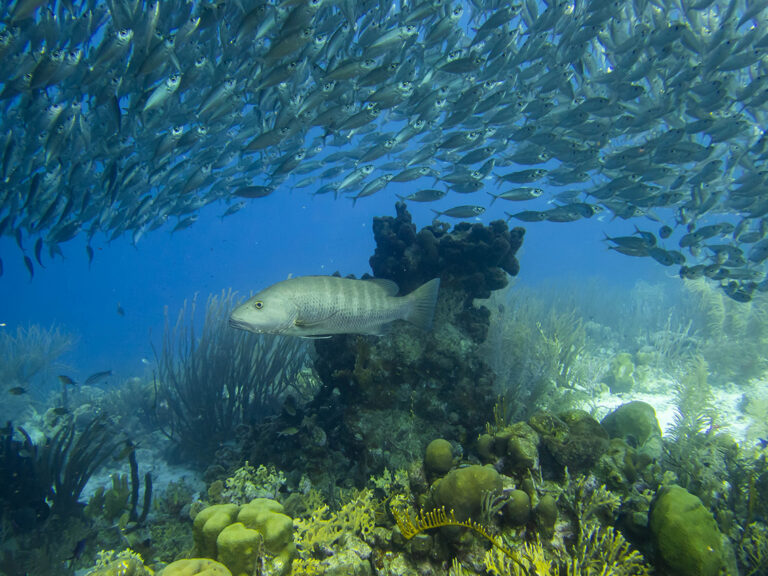
The NOAA RESTORE Science Program plans to release its next funding opportunity in March or April 2024 to support projects that will contribute to our knowledge of the trends and variability in the Gulf of Mexico’s natural resources, and the associated dynamics of abiotic and biotic factors driving those trends.
Applicants are encouraged to propose research that aligns with one or more of three areas of emphasis:
- Climate change – Research in this area should investigate how changes in the climate and its associated variability (e.g., extreme events such as hurricanes, precipitation events, drought, heat waves, etc.) impacts or drives long-term trends and variability in key natural resources in the Gulf region.
- Water quality – Research in this area should investigate how water quality (e.g., nutrient status and cycling, saltwater intrusion, harmful algal blooms, salinity dynamics, wastewater management, flooding, etc.) impacts or drives long-term trends and variability in key natural resources in the Gulf region.
- Fish and fisheries – Research in this area may investigate topics that enhance our understanding or lead to improved management of managed or endangered species, spawning aggregations, aquaculture, fisheries, and stressors.
The Science Program plans to make approximately $17.5 million available for this competition to fund approximately six projects that will run for five years with the option for a five-year, non-competitive renewal award for high-performing projects.
Applicants must clearly state the targeted natural resources or areas of emphasis for their project and clearly identify the management entities with whom they are working. Projects should be co-produced with relevant resource managers, end users, and other interested parties so that the research findings and products are scoped, designed, and utilized by resource managers and their institutions, the research community, non-governmental and boundary organizations, and others throughout the project’s award period and beyond.
Keep an eye out for more updates and information in the coming months!
Amount | ~ $17.5 million |
Number of Awards | ~ 6 The maximum individual award amount is approximately $4 million. |
Length of Awards | Proposals must be for 5 years with the option for a five-year, non-competitive renewal award for high-performing projects |
Priority | This announcement invites proposals that will contribute to our knowledge of the trends and variability in the Gulf of Mexico’s natural resources, and the associated dynamics of abiotic and biotic factors driving those trends. |
Deadlines | A letter of intent (3-page maximum) is required for each proposal. It will be due about eight weeks after the full announcement for the competition is publicly released. A full proposal will be due about nine weeks after the Science Program provides feedback on the letter of intent. |
Eligible Applicants | Institutions of higher education; non-profit institutions; local, state, and tribal governments; for-profit organizations; and U.S. territories and federal agencies that possess the statutory authority to accept funding for this type of work. The lead applicant must be from a U.S.-based entity. At least one natural resource manager must either lead or be on the project team. A letter of participation from the resource management agency is required. Science Program funding opportunities may not be used to hire and fund the salaries of permanent federal employees. Federal award recipients may use their funding to cover travel, equipment, supplies, and contractual personnel costs associated with the proposed work. Investigators are not required to be employed by an eligible entity that is based in one of the five Gulf of Mexico States (Florida, Alabama, Mississippi, Louisiana, and Texas). However, investigators that are not employed by or associated with Gulf of Mexico-based eligible entities are strongly encouraged to collaborate with partners from Gulf of Mexico-based eligible entities. |
Points of Contact | Caitlin Young Hannah Brown |
 Official websites use.gov
A .gov website belongs to an official government organization in the United States.
Official websites use.gov
A .gov website belongs to an official government organization in the United States.
 Secure .gov websites use HTTPS
A lock or https:// means you’ve safely connected to the .gov website. Share sensitive information only on official, secure websites.
Secure .gov websites use HTTPS
A lock or https:// means you’ve safely connected to the .gov website. Share sensitive information only on official, secure websites.